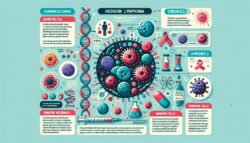Testicular Cancer Due to AFFF Firefighting Foam
Update January 2024:

The settlement amounts in AFFF (Aqueous Film-Forming Foam) lawsuits are influenced by a variety of factors. These factors include:
- **Level of Exposure**: The amount or level of exposure to firefighting foam is a critical factor in determining the settlement amount[1][3].
- **Cancer Diagnosis**: Information regarding the cancer diagnosis, including the type and severity of cancer, plays a significant role[1][2].
- **Medical Bills and Treatment Costs**: The costs incurred for medical treatment and any ongoing healthcare needs are taken into account[1].
- **Strength of Evidence**: The evidence presented, such as medical records and expert testimony, can affect the strength of the claim and the potential settlement amount[1][3].
- **Number of Plaintiffs Involved**: The number of plaintiffs and the collective strength of their cases can influence the overall settlement dynamics[3].
- **Defendant's Liability**: The extent to which the defendant is found liable for the plaintiff's condition affects the settlement amount[3].
- **Financial Resources and Negotiation Strategies**: The financial resources of the defendants and the negotiation strategies employed by legal teams can also impact the settlement amounts[3].
- **Lost Wages and Earning Capacity**: Compensation for lost wages and any loss of future earning capacity due to illness caused by AFFF exposure is considered[9].
It is important to note that each AFFF lawsuit is unique, and the settlement amount depends on the specific circumstances of the case. Therefore, consulting with an experienced attorney is crucial to understand the potential value of a claim[3]. Settlement amounts are not guaranteed and can vary widely based on the factors mentioned above[1][3].
Citations:
[1] https://www.torhoermanlaw.com/afff-lawsuit-firefighting-foam-lawsuit/afff-lawsuit-settlement-amounts/
[2] https://www.millerandzois.com/products-liability/firefighter-foam-cancer-lawsuit/afff-firefighting-foam-settlements-what-to-expect-and-when/
[3] https://uptowninjury.com/which-factors-influence-afff-lawsuit-settlement-amounts/
[4] https://lawsuitlegalnews.com/aqueous-film-forming-foam-afff-lawsuits/
[5] https://www.theconsumershield.com/articles/overview-of-afff-settlement-amounts-key-highlights
[6] https://www.torhoermanlaw.com/afff-lawsuit-firefighting-foam-lawsuit/who-is-eligible-for-the-afff-cancer-lawsuit
[7] https://www.sokolovelaw.com/personal-injury/workplace/chemical-exposure/firefighting-foam/settlements/
[8] https://www.lawsuit-information-center.com/afff-firefighting-foam-lawsuit.html
[9] https://uptowninjury.com/what-are-the-settlement-amounts-in-afff-lawsuit-cases/
[10] https://www.lezdotechmed.com/blog/afff-lawsuit-update/
[11] https://www.elglaw.com/faq/how-much-compensation-will-i-get-if-i-was-exposed-to-afff/
[12] https://trulaw.com/afff-lawsuit-firefighting-foam-lawsuit/
[13] https://www.torhoermanlaw.com/afff-lawsuit-firefighting-foam-lawsuit/firefighting-foam-cancer-settlement-amounts-guide/
[14] https://trulaw.com/afff-lawsuit-firefighting-foam-lawsuit/whats-available-for-compensation-for-afff-lawsuit-victims/
Testicular cancer, a malignancy arising in the male reproductive organs, is an increasingly significant concern, especially in relation to exposure to Aqueous Film Forming Foam (AFFF). This firefighting foam contains per- and polyfluoroalkyl substances (PFAS), a group of chemicals that have been associated with an array of adverse health outcomes, including various forms of cancer. Occupational exposure to AFFF, particularly in firefighters and military personnel, has been linked to a heightened risk of developing testicular cancer. The persistence of PFAS in the environment and their ability to accumulate in the human body warrant a closer examination of the implications for public health. Addressing this issue requires a multifaceted approach, including rigorous scientific research, informed healthcare practices, and robust regulatory frameworks to mitigate the impacts of these hazardous substances.
Key Takeaways
- PFAS chemicals, such as PFOA, found in AFFF have been linked to the development of testicular cancer.
- Firefighters, who have high exposure to PFAS chemicals, are at a significant risk for testicular cancer.
- The presence of PFAS chemicals in the blood of up to 97% of Americans and higher concentrations in children suggest a potential environmental cause for testicular cancer.
- Misdiagnosis of testicular cancer is common, underscoring the importance of early detection and accurate diagnosis.
Understanding PFAS Chemicals
Regarding PFAS chemicals, they are a group of man-made compounds that have been used extensively in various industries due to their resistance to heat, water, and oil. These chemicals, which include perfluorooctanoic acid (PFOA) and perfluorooctanesulfonic acid (PFOS), are linked to adverse health effects, including certain cancers, immune system dysfunction, and reproductive issues. The ubiquitous nature and persistence of PFAS in the environment pose significant regulatory challenges. Awareness and regulation of PFAS are crucial, as they are not only persistent in the environment but also bioaccumulate in human and animal tissues. Consequently, there is a growing impetus for evidence-based guidelines and stringent regulatory frameworks to minimize exposure and mitigate the potential health risks associated with PFAS.
AFFF Composition and Risks
Within AFFF formulations, the concentration of PFAS chemicals, including harmful agents like PFOA and PFOS, can range from 50% to 98%, presenting significant health risks upon exposure. The AFFF chemical composition has been scrutinized due to the robust evidence associating these chemicals with adverse health outcomes, including testicular cancer.
The table below outlines key components and associated risks of AFFF:
| Component | Concentration | Health Risks |
|---|---|---|
| PFOA | Up to 98% | Cancer, reproductive and developmental issues |
| PFOS | Up to 98% | Cancer, immune system impacts |
| Other PFAS | Variable | Endocrine disruption, organ toxicity |
| Non-PFAS Additives | < 50% | Combustibility, acute toxicity |
The health risks associated with AFFF exposure underscore the need for stringent occupational safety measures and the development of safer alternatives.
Laboratory Findings on PFAS
Research on laboratory animals has demonstrated that exposure to PFAS chemicals, prevalent in AFFF formulations, is linked to the development of malignant tumors, including testicular cancer. PFAS toxicity represents a critical public health issue due to its persistence in the environment and bioaccumulation in living organisms. Laboratory findings indicate that PFAS can disrupt endocrine functions, with high-affinity binding to hormone receptors, which may facilitate oncogenesis. Detecting PFAS in water sources has become a pivotal aspect of environmental monitoring, as these compounds are resistant to conventional water treatment processes. The quantification of PFAS levels in biological and environmental samples requires sophisticated analytical techniques, which are essential for assessing the risk of exposure and guiding regulatory measures to protect public health.
Prevalence of PFAS in Americans
Monitoring the prevalence of PFAS chemicals reveals that up to 97% of Americans have these substances in their bloodstream, with particularly high levels detected in firefighters and military personnel due to AFFF exposure. The widespread presence of PFAS in drinking water contributes significantly to this exposure, raising concerns about the long-term health effects, which include carcinogenic outcomes, endocrine disruption, and immune system impairments. Evidence-based research underscores the urgency of addressing PFAS contamination to mitigate these health risks.
| Population Group | PFAS Blood Levels | Source of Exposure |
|---|---|---|
| Firefighters | Very High | AFFF Use |
| Military Personnel | High | AFFF, Bases |
| General Public | Moderate | Drinking Water |
This data reflects the pressing need for regulatory measures and advanced filtration technologies to reduce PFAS prevalence in the environment.
Firefighters’ Elevated Risk
Numerous firefighters face an elevated risk of developing testicular cancer as a result of their frequent exposure to AFFF containing high levels of PFAS chemicals. The presence of these chemicals, particularly PFOA, has been clinically associated with an array of health detriments, including malignancies such as testicular cancer. Firefighters' routine contact with AFFF during fire suppression elevates their PFAS blood concentration significantly above the general population, thus increasing their cancer risk.
The ramifications extend beyond physical health, as Firefighters' mental health is also impacted by the diagnosis and the ensuing treatment challenges. Ensuring Support for affected communities, including firefighters and their families, is imperative. These support systems should encompass medical guidance, psychological counseling, and legal assistance to navigate the complexities of occupational cancer attributed to toxic exposure.
PFAS Impact on Children
Considering their higher serum PFAS concentrations, children are particularly vulnerable to the adverse health effects of these chemicals, which may predispose them to diseases like testicular cancer later in life. The long term effects of PFAS on children include:
- Developmental Delays: PFAS exposure has been linked to slower development and maturation, potentially impacting cognitive function and physical growth.
- Immunotoxicity: Research indicates that PFAS can weaken the immune system, making children more susceptible to infections and reducing vaccine efficacy.
- Endocrine Disruption: PFAS are known to disrupt hormone regulation, which is crucial during a child's development and could contribute to reproductive health issues.
- PFAS Exposure in Schools: With the widespread use of PFAS, there is a concern about contamination in educational settings, which could exacerbate children's exposure and associated health risks.
Testicular Cancer in Young Adults
A significant number of young adults diagnosed with testicular cancer may have had prenatal or early life exposure to PFAS, including those found in AFFF. Research indicates that the long-term effects of AFFF exposure can include reproductive toxicity, with testicular cancer being a critical concern. Prevention strategies must consider the history of AFFF use and the potential for bioaccumulation of PFAS in individuals.
| Prevention Strategy | Potential Benefit |
|---|---|
| Reducing AFFF use | Lower PFAS levels |
| Screening Exposures | Early Detection |
| Educational Programs | Increased Awareness |
It is imperative for healthcare providers to integrate testicular cancer prevention methods with a focus on identifying and mitigating the risks associated with environmental exposure to PFAS. Advancing our understanding is crucial for protecting future generations from the insidious health implications of AFFF.
Environmental Factors in Cancer
While the role of genetics in cancer development is well-documented, environmental factors such as prolonged exposure to PFAS chemicals in AFFF are increasingly recognized as significant contributors to the incidence of testicular cancer. The impact of environmental pollution on cancer rates is a growing concern in the medical community. Moreover, the role of lifestyle factors in cancer development cannot be overstated. To elucidate this point:
- Persistent environmental pollutants like PFAS have been linked to higher rates of testicular and other cancers.
- Occupational hazards, including AFFF exposure in firefighters, significantly elevate the risk of malignancies.
- Lifestyle choices, intertwined with environmental exposures, can synergistically increase cancer susceptibility.
- Public health interventions aim to reduce environmental carcinogens and promote lifestyle modifications to mitigate cancer risk.
PFAS and Reproductive Health
Exposure to per- and polyfluoroalkyl substances (PFAS) in Aqueous Film Forming Foam (AFFF) has been linked to significant reproductive health risks, including testicular cancer. Research indicates that PFAS can lead to fertility issues and hormone disruption, raising concerns about long-term reproductive outcomes.
| Potential Impact of PFAS | Description |
|---|---|
| PFAS and Fertility | Reduced sperm count and motility |
| Hormonal Disruption | Altered testosterone and estrogen levels |
| Developmental Effects | Impaired fetal growth and development |
| Risk of Malignancies | Increased incidence of testicular cancer |
These findings underscore the need for stringent occupational safety measures and the development of PFAS-free alternatives to mitigate exposure and protect reproductive health.
Occupational Exposure Concerns
One must consider the elevated risks that various occupations face, with firefighters, military personnel, and AFFF manufacturers among those most susceptible to the harmful effects of PFAS-related testicular cancer. These individuals routinely encounter environments where PFAS concentrations are significantly higher than in the general population, leading to increased occupational health risks. To address this concern, it is essential to implement robust workplace safety measures.
- Regular health screenings for early detection of testicular cancer and other PFAS-related illnesses.
- Provision of personal protective equipment to minimize direct exposure to AFFF.
- Implementation of safer alternatives to PFAS-containing foams in firefighting and manufacturing.
- Training and education programs on the proper handling and disposal of AFFF to prevent environmental contamination and reduce exposure.
Soil Contamination at Bases
Military bases have long utilized aqueous film-forming foam (AFFF) containing PFOS and PFOA, leading to persistent soil contamination and health risks for personnel and their families. The environmental persistence of these compounds complicates PFAS contamination prevention, necessitating comprehensive strategies to mitigate further environmental impact and exposure. Remediation efforts are critical, as longitudinal studies substantiate the correlation between soil contamination and the long-term health effects, including endocrine disruption and carcinogenicity. Proactive soil testing, the implementation of alternative firefighting agents, and stringent environmental safeguards are imperative to safeguard against the insidious nature of PFAS. Military and health officials must prioritize these actions to address the potential for systemic health hazards, particularly addressing the risk of testicular cancer and other conditions linked to PFAS exposure.
Illnesses Among Military Families
Families residing on or near military installations have reported a spectrum of illnesses potentially linked to long-term PFAS exposure through contaminated soil and groundwater. The insidious nature of military base contamination has raised significant concerns regarding the:
- Prevalence of Developmental Disorders: Heightened health effects on children, including developmental delays and growth issues, have been observed.
- Cancer Incidence: There is a troubling correlation between PFAS exposure and increased cancer rates among populations associated with military bases.
- Immune System Complications: Studies indicate that PFAS compounds can lead to immunological problems in exposed individuals.
- Reproductive Health Concerns: Evidence suggests potential reproductive issues stemming from contamination, with particular implications for future generations.
The focus on these health outcomes underscores the critical need for continued research and intervention strategies to mitigate the impact of PFAS compounds on military families.
Challenges in Cancer Diagnosis
The diagnostic process for military personnel's testicular cancer presents significant challenges, often exacerbated by the nonspecific symptoms associated with the disease and potential previous exposure to PFAS compounds. The challenges in early detection are multifaceted, including the difficulty in distinguishing between benign and malignant masses solely based on physical examination and symptoms. As a result, there is an ongoing emphasis on improving diagnostic tools. Enhanced imaging techniques, such as high-resolution ultrasonography, and biomarker assays are being refined to increase sensitivity and specificity. These advancements aim to facilitate earlier intervention, thereby improving prognostic outcomes. However, the latent effects of PFAS exposure complicate the clinical picture, demanding a high index of suspicion and a multidisciplinary approach to achieve accurate and timely diagnoses.
Legal Recourse for Victims
Victims of testicular cancer linked to AFFF exposure may seek legal compensation for their illness due to manufacturer negligence. As evidence mounts regarding the health risks associated with PFAS chemicals found in AFFF, numerous legal actions have been initiated focusing on obtaining justice and compensation for affected individuals.
Legal recourse for victims typically involves several compensation options:
- Filing Individual Lawsuits: Seeking damages for medical expenses, lost wages, and pain and suffering.
- Joining Class Action Suits: Banding together with other affected individuals to pursue claims against AFFF manufacturers.
- Seeking Settlements: Negotiating with responsible parties for a fair settlement outside of court.
- Exploring Government Claims: Investigating potential claims against military or other governmental entities if exposure occurred on federal property or during service.
Each legal pathway requires specialized knowledge to navigate the complex landscape of environmental litigation effectively.
Minimizing AFFF Health Hazards
Implementing stringent safety protocols is imperative to mitigate the health risks associated with Aqueous Film Forming Foam (AFFF) usage, particularly for those in occupations with elevated exposure to per- and polyfluoroalkyl substances (PFAS). Protective measures for firefighters, who face a high likelihood of encountering AFFF, include the use of personal protective equipment (PPE), rigorous decontamination procedures, and the transition to PFAS-free foams when possible. Concurrently, public education on AFFF risks must be intensified, informing communities about the potential health implications and promoting informed decision-making. By integrating evidence-based practices and disseminating specialized knowledge on PFAS hazards, we can significantly reduce the incidence of testicular cancer and other health issues related to AFFF exposure.
Frequently Asked Questions
How Do Dietary Habits Influence the Absorption or Accumulation of PFAS in the Body, and Could This Affect the Risk of Developing Testicular Cancer?
Dietary habits can sway the body's absorption and accumulation of PFAS, potentially modulating cancer risk. Through dietary detoxification, certain foods may reduce PFAS bioavailability. The efficacy of superfoods, high in antioxidants, could theoretically impede PFAS retention. However, clinical expertise emphasizes the need for evidence-based research to substantiate such claims. While specialized knowledge highlights potential dietary impacts, the direct correlation with testicular cancer risk necessitates further scientific investigation.
Are There Any Known Genetic Factors That Make Certain Individuals More Susceptible to the Carcinogenic Effects of PFAS Exposure?
Genetic predisposition plays a critical role in individual susceptibility to the carcinogenic effects of PFAS exposure. Research indicates that certain chromosomal abnormalities may increase the risk of cancer when combined with environmental factors like PFAS. Evidence-based studies are exploring the complex interactions between genes and these persistent pollutants to better understand the specialized mechanisms of risk and to inform targeted prevention strategies for at-risk populations.
What Are the Long-Term Health Monitoring Protocols for Individuals Who Have Had Significant Exposure to AFFF but Do Not Currently Show Any Signs of Illness?
Long-term health monitoring protocols for individuals with significant AFFF exposure typically involve regular medical check-ups and clinical assessments. These measures are part of comprehensive environmental policy frameworks aimed at early detection of potential health issues. Surveillance programs may include periodic blood tests to monitor PFAS levels, as well as cancer screening and ongoing evaluation for any emerging symptoms suggestive of related illnesses, utilizing specialized knowledge to guide evidence-based preventive interventions.
Can the Use of Personal Protective Equipment (Ppe) Effectively Reduce the Risk of PFAS Absorption in High-Risk Occupations, and What Are the Current Recommendations?
Personal protective equipment (PPE) can mitigate PFAS exposure in high-risk jobs. However, PPE's protective limitations against absorption mechanisms of PFAS must be considered. While PPE serves as a barrier, it does not fully eliminate risk, especially since PFAS can penetrate skin or be inhaled. Current recommendations include comprehensive PPE use, coupled with strict hygiene practices and handling procedures, underpinned by ongoing research to enhance protection effectiveness.
In the Case of Shared Water Sources, How Might Communities Adjacent to Military Bases or Firefighting Training Facilities Be at Risk, and What Measures Can Be Taken for Community-Wide Protection and Surveillance?
Communities near military bases or firefighting facilities are at risk of PFAS contamination in shared water sources. To safeguard public health, implementation of advanced water filtration systems is essential. These systems can significantly reduce PFAS levels, mitigating potential health risks. Additionally, affected communities should be informed of their rights to pursue legal action against entities responsible for contamination, ensuring ongoing protection and surveillance through policy change and remediation efforts.

This post has been generated by AI and was not reviewed by editors. This is Not legal advice. Please consult with an attorney.



